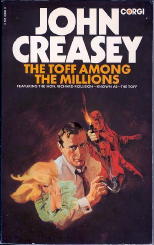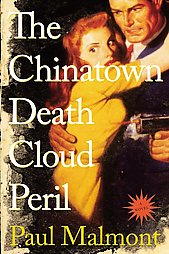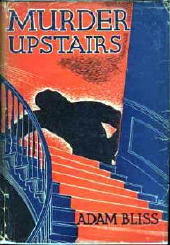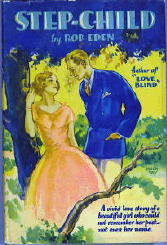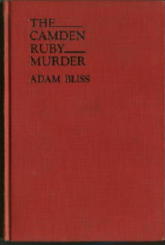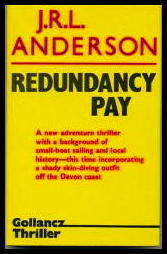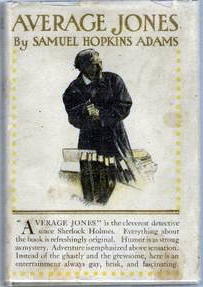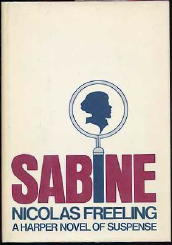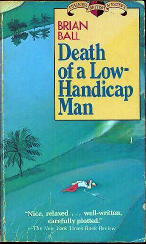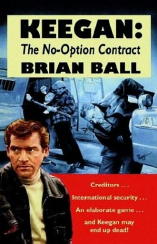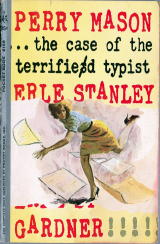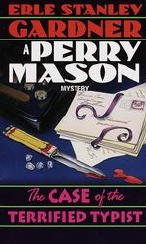Wed 25 Jul 2007
Review: STUART BROCK – Bring Back Her Body.
Posted by Steve under Authors , Crime Fiction IV , Reviews1 Comment
STUART BROCK – Bring Back Her Body
Ace Double D-23; paperback original; 1st printing, 1953. Published back-to-back with Passing Strange, by Richard Sale.
Stuart Brock, as all vintage paperback collectors know, especially those who collect mystery fiction also, was the pen name of Louis Trimble, who started his career writing hardcover detective novels for Phoenix Press in the early 1940s. Eventually he ended up writing westerns and science fiction novels for Donald A. Wollheim, first at Ace, then (SF only) at DAW, which would have been in the mid-1970s.
Trimble also wrote westerns as Stuart Brock, but here, taken from Allen J. Hubin’s Crime Fiction IV, is a list of all four mysteries he wrote under that name:
BROCK, STUART; pseudonym of Louis Trimble, (1917-1988)
Death Is My Lover. M. S. Mill Co., hc, 1948. Readers Choice Library #38, pb, 1952 (abridged).
Just Around the Coroner. M. S. Mill Co., hc, 1948. Dell 337, mapback, 1949.
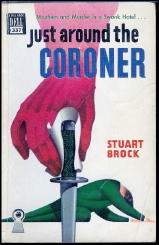
Bring Back Her Body. Ace Double D-23, pbo, 1953.
Killer’s Choice. Graphic #136, pbo, 1956.
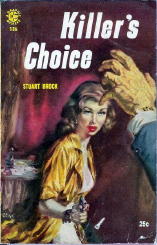
The detective in the latter book is a private eye named Bert Norden. I apologize to say that I don’t know who did the sleuthing in the first two books, but I’m sure that all four books are in the same deep pure pulp tradition as Bring Back Her Body, in which the detective work is done by a gent named Abel Cain. I don’t really think he ever had another case to solve, and if he did, it would be hard to imagine one more, well, remarkable than this one.
Cain’s father was, according to page 9, a renegade minister and had given his son his name as a joke, along with “a somewhat agnostic realism that Cain found to be incompatible with modern civilization.” He had been a bootlegger and a commercial fisherman, the latter which he still was when he needed the money, but mostly his time is his own, except when he acts as an unpaid, unlicensed private eye.
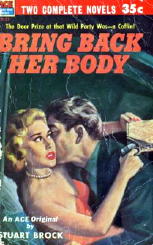
Which he is in this case, hired by a rich businessman to keep an eye out for his stepdaughter Paula, who has disappeared and who also just happens to have enough stock in her possession to worry her stepfather when important business deals come along, which as the book opens, will be soon.
Paula’s stepsister, Honor Ryerson, hangs out with the much older Abel Cain, and whew, is she a handful. She is an ardent believer in both astronomy and nudism, often at the same time, and is also obsessed with Cain as a would-be lover. He thinks she is a child, and she thinks not. In the course of hunting for her sister, Cain finds another woman whom he finds himself falling for, the threesome making for an odd, well, threesome, although not in the sense that may come immediately to mind.
On page 35 comes a staggering discovery, an unveiling (or unlidding, in this case) held as the climax to what you might consider a wholly decadent party: “Stretched out in the coffin, clad in a shroud, was the still, pale form of Paula Ryerson.”
As I said earlier, pure pulp, and perhaps even more risque. Well, no “perhaps” about it. It is risque to the point of edginess. There is more to the story than the last line of the previous paragraph suggests, but you will have to read the story for yourself to learn what I mean. There are certain things that I cannot begin to tell you in the context of a review without telling you too much.
Once the story begins, so does the action, and the action never lets up for the entire 142 pages of the story, which begins humorously and ends with a couple of tough, chilling scenes that are also rather shocking, mostly because … I can’t tell you.
It ends happily enough, however, as did most of the stories in the old pulp magazines. No exception here.

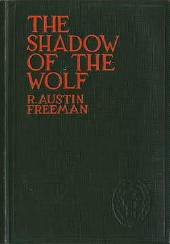 Here is a case where, if you weren’t convinced already, having an etext you can read online is going to be a big, big money saver. The least expensive copy of the Dodd Mead edition that I spotted moments ago on Abebooks will set you back you $60. (It’s not the same one, but it is the Dodd edition that you see to the left.) The asking price for the Battered Silicon Box edition is $65, and the cheapest Hodder & Stoughton edition will cost you around $80, including postage from England.
Here is a case where, if you weren’t convinced already, having an etext you can read online is going to be a big, big money saver. The least expensive copy of the Dodd Mead edition that I spotted moments ago on Abebooks will set you back you $60. (It’s not the same one, but it is the Dodd edition that you see to the left.) The asking price for the Battered Silicon Box edition is $65, and the cheapest Hodder & Stoughton edition will cost you around $80, including postage from England. 